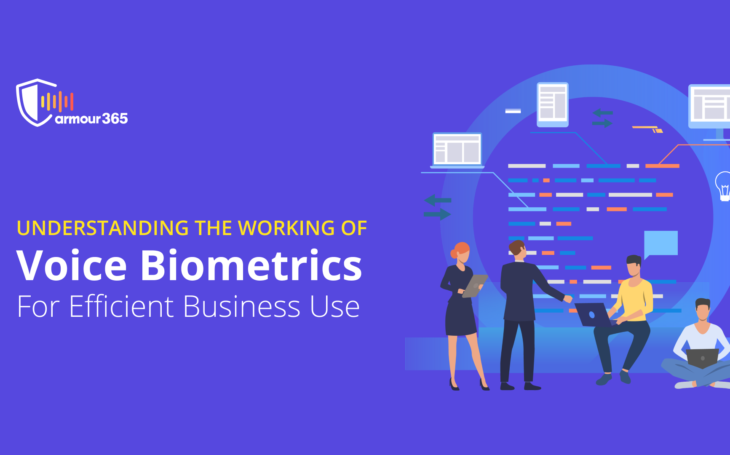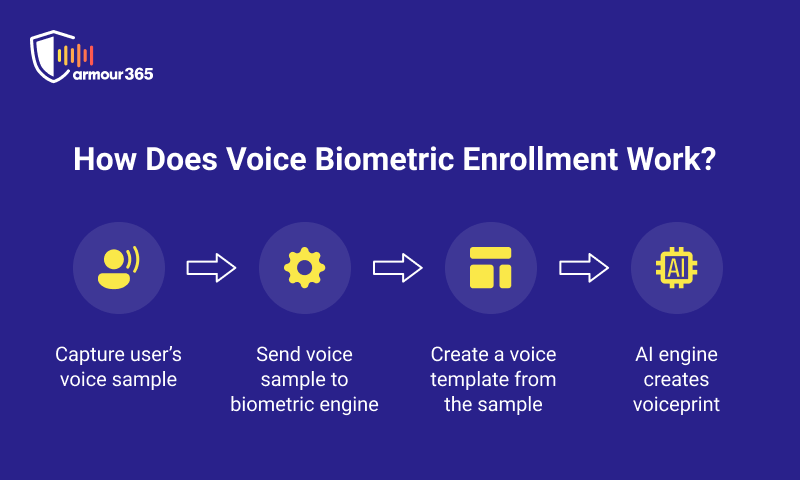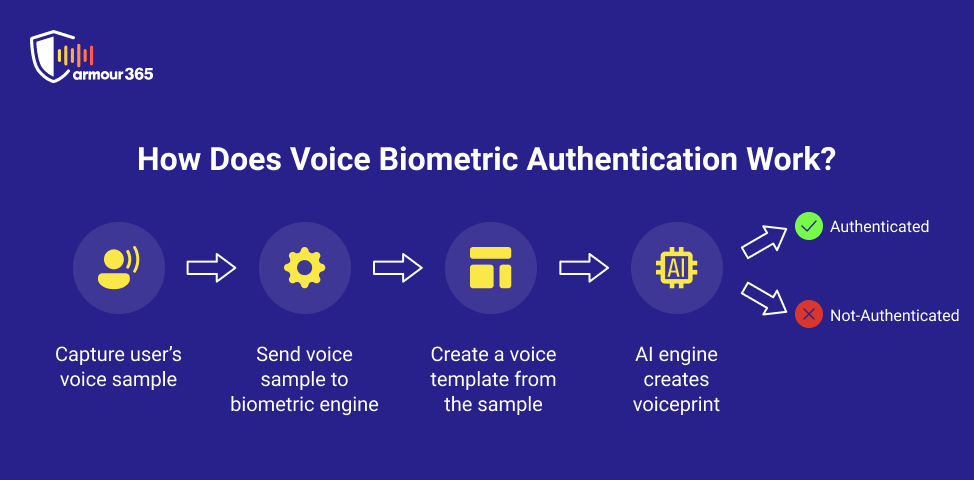
As internet penetration and mobile phone usage increase, there is a need for stronger authentication systems over the traditional password/OTP-based systems. While biometric authentication based on physiological traits like fingerprints, iris scans, etc., work well, they aren’t amenable to remote users.
Voice biometrics bridges that gap and therefore has great potential to transform customer authentication and secure customer service delivery for various industries.
The global Voice Biometrics Market size will reach USD 4.7 billion by 2027. There are plenty of choices available out there in the market, and a basic understanding of how the system works makes it easier to pick the most suitable kind for your business. Read on to find out how voice biometrics works and its applications.
Types of Voice Biometrics Identification Methods
Fundamentally, a voice-based authentication system compares a person’s voiceprint to stored samples to validate their identity. The voiceprint may be text-dependent, text-independent, text-prompted, or digit-independent. There are two ways to go about this- active voice authentication and passive voice authentication.
Active Voice Biometrics: The user participates actively in this method. System/agent will inform the user that they need to speak to verify their identity. The user has to say or repeat a phrase or a string that is either shared dynamically by the system or the phrase the user has set during the enrollment. The voiceprint is then compared to the stored voiceprint in the database to authenticate the user.
Passive Voice Biometrics: The user’s voice is verified automatically in the background as they speak to a bot or a human agent in a regular conversation lasting at least 20 seconds. The voiceprint collected during the conversation is compared to the voice sample in the database.
How Voice Biometrics Works
So by now, we know that a voice biometrics system has a database of the enrolled users’ voiceprints and a mechanism to compare the user’s fresh conversation. Let’s have a brief overview of how voice biometrics enrollment works.
When a user speaks for the first time, their voice is recorded, and a sample is registered. The AI-powered voice biometrics analyzes the different traits in the voice sample(s) like speed, accent, tone, pitch, also using neural networks to filter out ambient noise. Physiological characteristics like larynx structure also play a role. The statistical algorithm and complex mathematical model finally generate a voiceprint after many calculations involving all these factors —. The prints are stored securely.

The quality of the NLP and NLU engine determines the level of understanding of the AI. In simple words, if the neural network and the language processing are better, the collected voiceprint will have better details.
Every time the user speaks subsequently, the system makes a voice model and compares it to the voiceprint stored. No two voiceprints are alike, and the anti-spoofing layer in the software makes it impossible to fake a voice sample. The following diagram shows how voice biometrics matching works.

Using Voice Biometrics for Efficient Authentication
The enhanced security features of voice biometrics make it a good choice for remote and contactless identity verification. The use cases of voice biometrics are limitless, but it can be particularly useful for contact center automation in domains like banking and financial services to shorten the time taken for user authentication before accessing services.
Easy To Integrate For Seamless Operation
Voice biometrics being a special hardware-independent system, it can be easily deployed into any communication channel.
IVR Integration- The voice recognition system can be integrated with IVR systems, which requires active enrollment. Another option is to have it integrated into live agent calls to make authentication seamless, reducing operational and fraud costs.
Whatsapp Integration- Voice biometrics systems can also be integrated with Whatsapp, allowing the potential to use Whatsapp for more services than just simple customer requests. Using voice biometrics, Whatsapp could be used for secure payments and other interactions after a short voice message for enrollment.
Contact Center Solutions- Voice biometrics can be integrated into contact center solution software like Avaya, Twilio, Amazon connect, etc. Therefore, agents can easily verify the customers when they call the contact centers.
Support Service Solutions- Many small businesses and enterprises use support software like Salesforce, Zendesk, etc., to easily manage tickets and customer queries. Deploying voice biometrics into the support systems will make file access easier and secure.
Are you interested in using voice biometrics to enhance efficiency in remote access and security? Gnani’s armour365™ deploys easily across channels and offers a seamless API.




